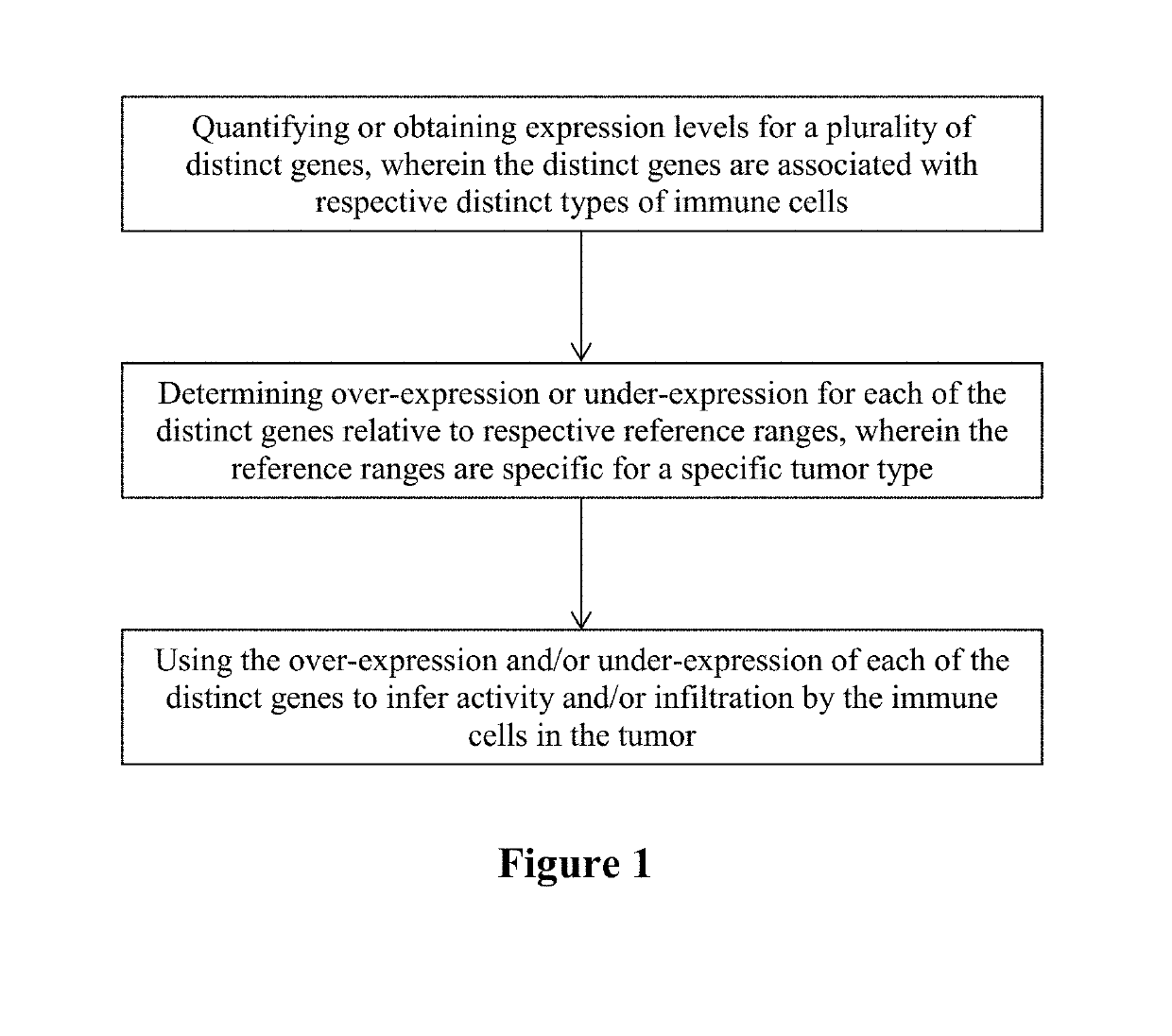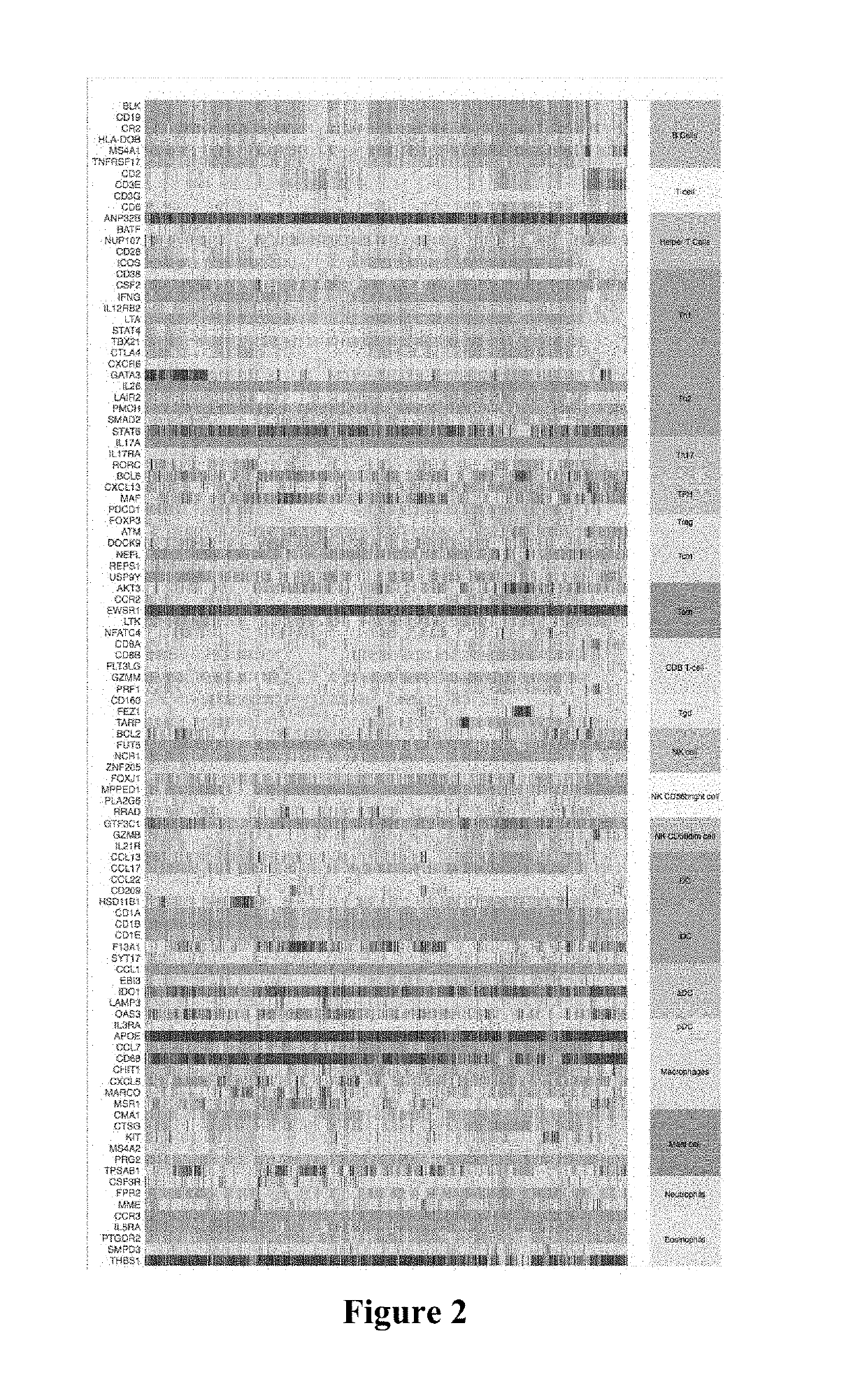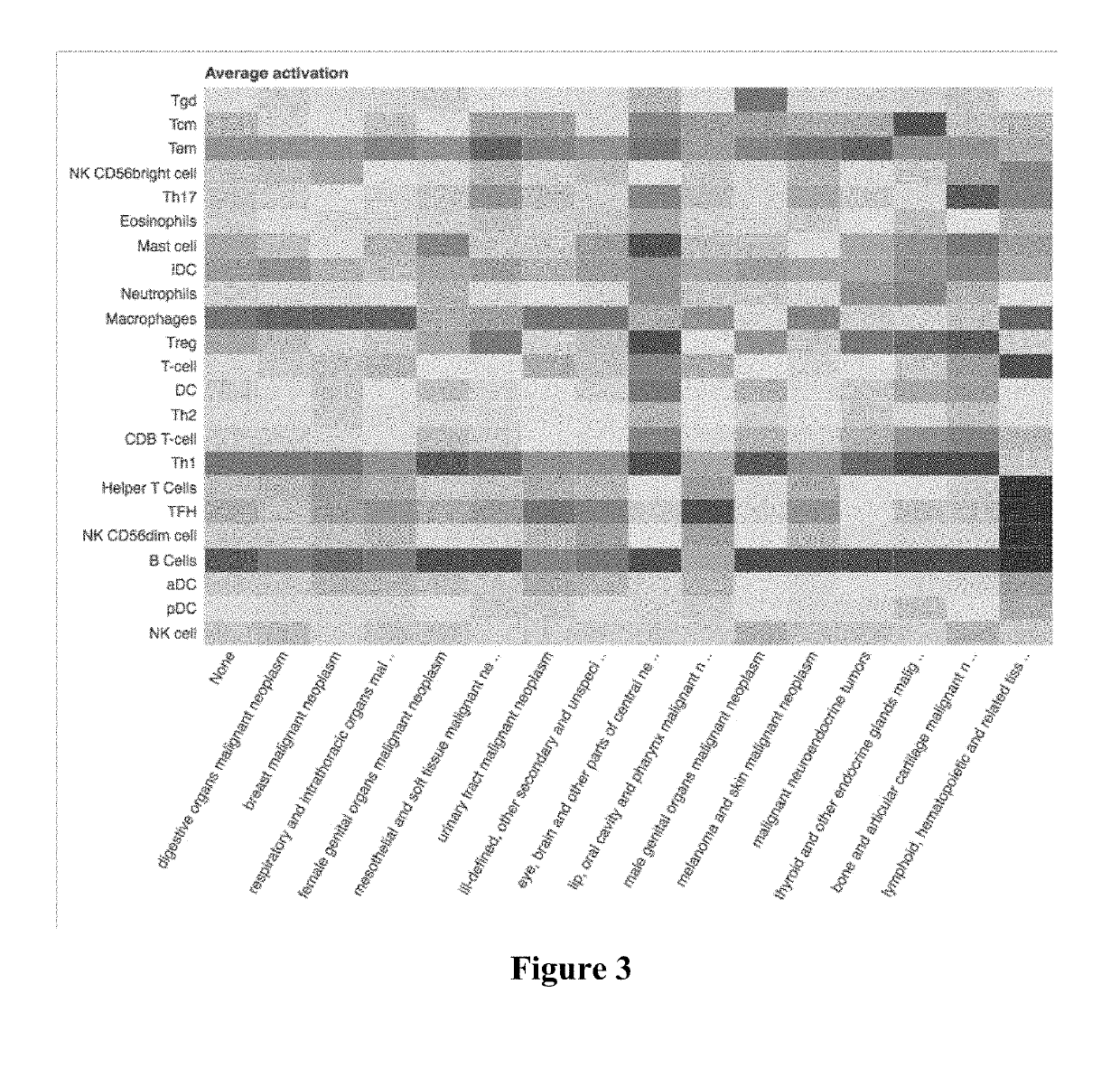Immune cell signatures
a technology of immune cells and signatures, applied in the field of tumor tissue gene analysis, can solve the problems of poor prognosis association, undermine the notion that foxp3+ tregs invariably suppress tumor immunity, and none of the known studies have produced suitable results, and achieves low pdl1 expression and high immune infiltration.
- Summary
- Abstract
- Description
- Claims
- Application Information
AI Technical Summary
Benefits of technology
Problems solved by technology
Method used
Image
Examples
example 1
sion Patterns of Immune Checkpoint Molecules in Relation to PD-L1 Expression
[0066]Targeting immune checkpoints has led to clinical benefit across a variety of tumor types, and employing combinations has enhanced response rates even further. In one embodiment, the inventors have now found that profiling the tumor and associated microenvironment can help tailor rational combinations of immunotherapeutic strategies.
[0067]Whole transcriptomic sequencing (RNA-Seq; ˜200×106 reads per tumor) of 1,880 unselected clinical cases was performed (NantHealth; Culver City, Calif.). Cases reflected 38 distinct histologies including but not limited to breast (17.8%), colon (9.5%), lung (7.9%), pancreatic (6.5%), ovarian (5.4%), brain (4.9%) and prostate cancer (2.7%). Cases were categorized as PD-L1-low, PD-L1-normal and PD-L1-high by cutoffs defined in TCGA expression profiles. Expression and co-expression of 6 checkpoint markers (PD-L1, PD-L2, CTLA4, IDO1, LAG3 and TIM3) were analyzed for tissue-s...
example 2
for Selective Silencing of WIC-Binding Neoepitopes to Avoid Immune Surveillance
[0070]Overall response rates to immune checkpoint inhibition (ICI) are <50% even in TMB-high patients (e.g. Checkmate-227), suggesting other mechanisms of immune escape exist beyond expressing checkpoints. At least 18% of somatic-specific exonic DNA variants are not expressed into mRNA, yet the selection criteria for which variants to silence remains unclear. The inventors determined whether immunogenicity of variants factors into their suppression.
[0071]Somatic-specific single nucleotide variants (SNVs) were identified from paired tumor / normal whole-exome sequencing (WES), and annotated as expressed if observed in >=2 RNAseq reads. MHC1 binding affinity for 9-mer neoepitope peptides resulting from said SNVs were predicted using NetMHC within presented HLA-types. Cases with >200 non-synonymous exonic mutations were designated as TMB-high in accordance with Rizvi et al, 2015. Tumor immune activity was infe...
example 3
scape in Checkpoint Inhibitor Ineligible Patients by IHC and cfRNA
[0074]Immune checkpoint inhibitors (ICT) are indicated in patients with PDL1+ IHC and restricted to certain histologies. Other tumor histologies express PDL1 at various frequencies with no established threshold for therapeutic efficacy. In one embodiment, the inventors evaluated traditionally ICI non-indicated histologies by IHC and cfRNA to determine potential therapeutic thresholds.
[0075]A total of 97 pts (cancer of unknown primary [N=10], appendix [N=6], bile duct [N=4], colorectal cancer [N=25], esophageal [N=6], ovary [N=7], pancreas [N=15] other [N=24]) with WIC (Dake 76 22C3, 21 SP142) and cfRNA for PDL1 were available for analysis. cfRNA was a random draw not matched with the time of tissue collection and performed by qPCR. A cutoff of >1.5× for PDL1 normalized to beta actin was defined as PDL1+ in cfRNA. IHC >10% was used as the threshold for IHC+.
[0076]Most patients were PDL1− by IHC: 90 / 97 (93%), PDL1 TPS: ...
PUM
| Property | Measurement | Unit |
|---|---|---|
| Level | aaaaa | aaaaa |
| Affinity | aaaaa | aaaaa |
Abstract
Description
Claims
Application Information
 Login to View More
Login to View More - R&D
- Intellectual Property
- Life Sciences
- Materials
- Tech Scout
- Unparalleled Data Quality
- Higher Quality Content
- 60% Fewer Hallucinations
Browse by: Latest US Patents, China's latest patents, Technical Efficacy Thesaurus, Application Domain, Technology Topic, Popular Technical Reports.
© 2025 PatSnap. All rights reserved.Legal|Privacy policy|Modern Slavery Act Transparency Statement|Sitemap|About US| Contact US: help@patsnap.com



